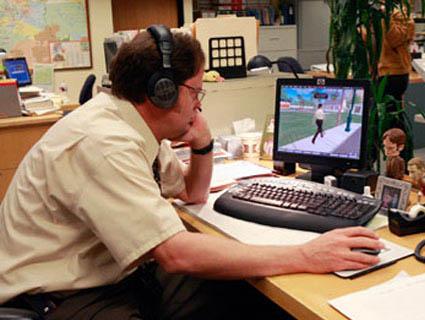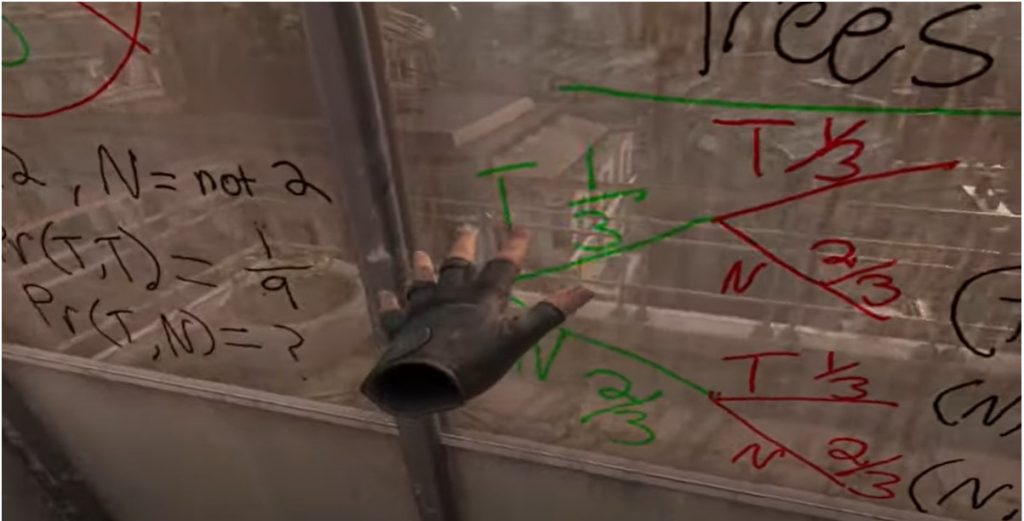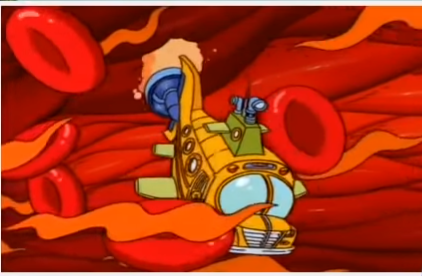
My Virtual Reality (VR) experience is very limited. I do recall one Christmas Day a few years ago putting a plastic box on my face with a phone attached to it. I also remember feeling a headache come on pretty quickly. In the education world, that experience is even less. A school that I used to teach at invested in equipment for a VR room, but I did not take advantage of it. There were a small handful of students who used it with Student Support Teachers, but I feel confident in saying that the school did not receive a very high return on the investment.

As a teacher who has taught a lot of math over the last 3 years, I was very curious to view the Half-life math lesson shared this week. I feel confident in saying that I know the Grade 8 math curriculum well and am open to incorporating new methods of instruction into class, especially if it means increased student engagement. The traditionalist in me though is always wary of “fluff” (see previous paragraph) or “flashy” at the expense of learning. Watching the video of the probability lesson, I was waiting to be blown away. Waiting for the part where the student becomes actively engaged. Waiting for the value added by the VR element. I may come across as pessimistic about the VR experience, but I found this lesson not that different from how I might actually teach it in the classroom. If I was brave enough to record lessons, I think it would be awfully similar to this, except using a whiteboard, physical or digital. The shaky ‘camera’ work was a little distracting as well, but I kept asking, “how is this different from a classroom?”

Side note: Writing the probability trees on the virtual windows actually reminded me of a “Thinking Classroom” where students write on vertical, non-permanent surfaces – whiteboards, windows, etc.

If the time came where VR, Augmented Reality (AR), or Mixed Reality (MR) was a part of my teaching repertoire, and that may actually happen over the next dozen years, my current primitive stance on the subject makes me think that science would be an applicable class to get started in.
- Exploring life at the cellular level, really inspecting organelles; getting into the human eye, exploring lenses or mirrors; visiting different water systems and experimenting with human or natural influences on the environment.

Obviously, with any change in education, there will be a need for funds, and not just for the equipment and space, but for the training to make sure that students and schools/divisions are getting value for their investment. While daring to dream and push boundaries in learning through this potential educational tool, our group this week did acknowledge some negative effects of AR, VR, and MR on learning. Being only in the early stages of use in elementary and high schools, it was noted that best practices are unknown and those are essential to make meaningful use of the technology. I don’t think that it is too far fetched to think that my own children may experience the use of VR/AR/MR when they get to high school, and probably even more likely that their kids do.
I know that my colleagues in this class teach a variety of subjects and grade levels, and I am curious… How do you envision VR/AR/MR being applied in education in the future?
I think the general feeling from most about VR has been one of pessimism. I am all for new technologies, but I don’t think we need EVERY new technology in schools. I am incredibly reserved in my thoughts on VR in schools. I just don’t see it being a viable thing in the classrooms. Again, possibly a traditionalist too, but I’m not even sure I want to. I always balance tech in the classrooms with this nagging feeling that most kids get a lot of it outside of schools, and so sometimes I just don’t want to use tech in the class. Again, I’m not flat out opposed to it in schools, but think maybe the technology might be too new yet, so will wait and see how it develops.
Great post Bart. In my opinion I don’t see it being something that ends up being used too much. I think that is a lot that we don’t know about how it impacts students (especially the younger ones) and that + plus the cost will limit how much it is used in schools. I could see it becoming something more popular at a university or specialized program for things like flight or surgery simulation. We have so many technologies that are emerging and not everything needs to be used in a classroom.